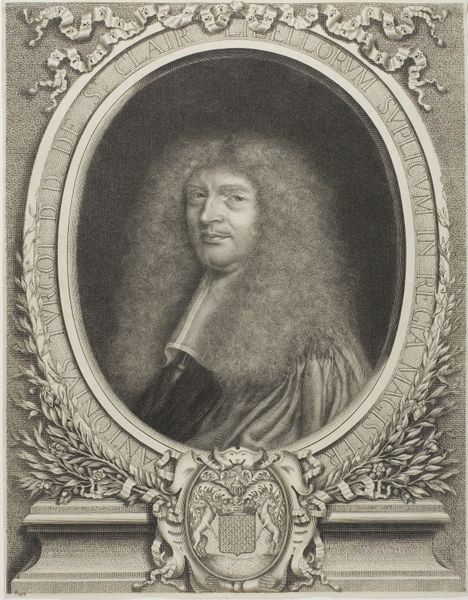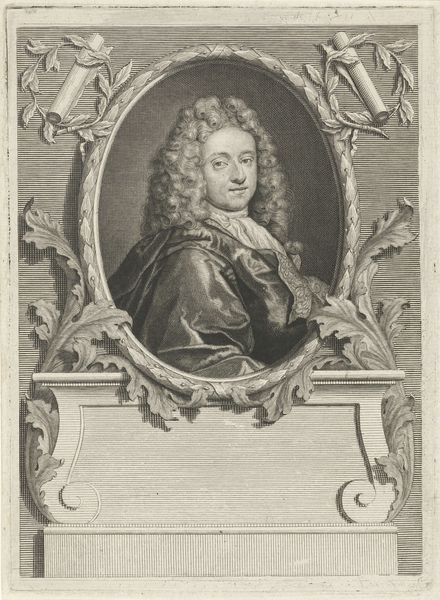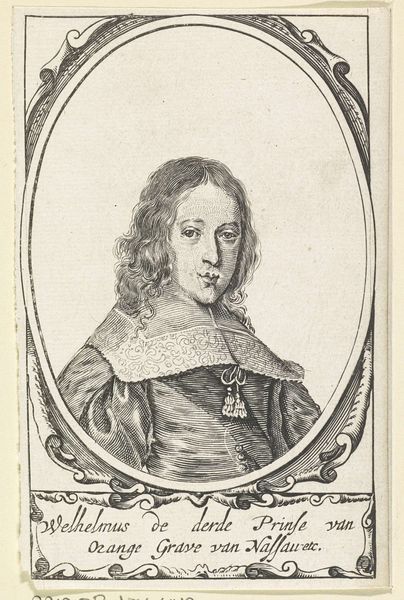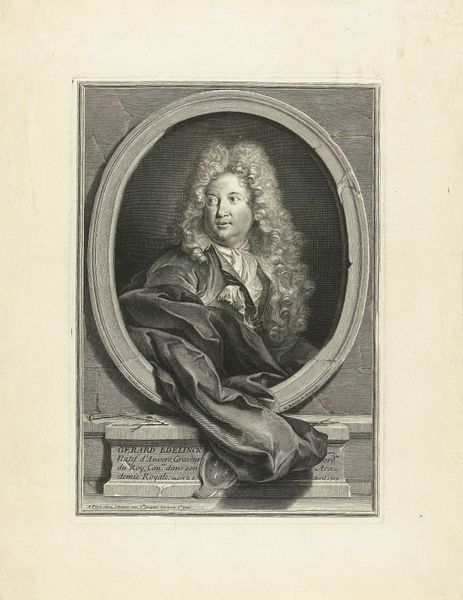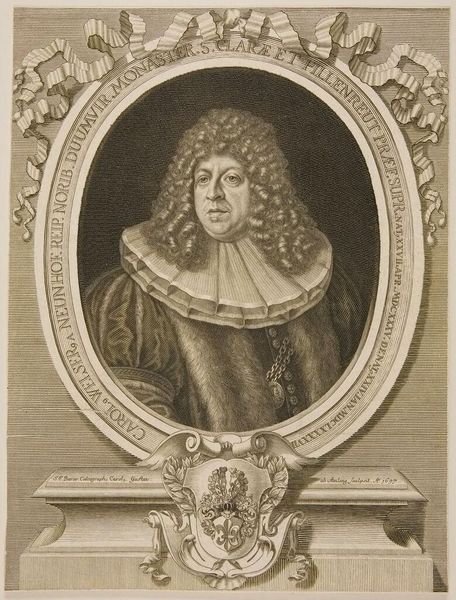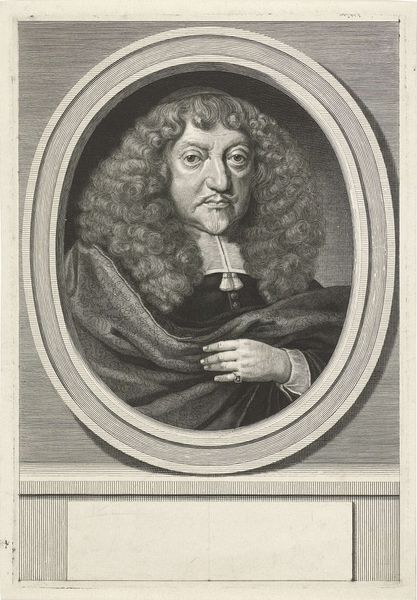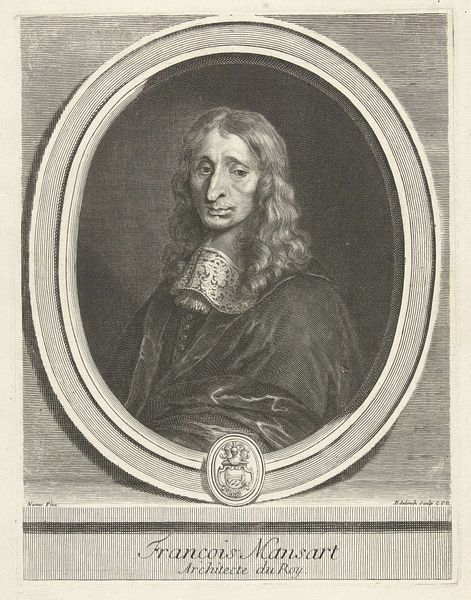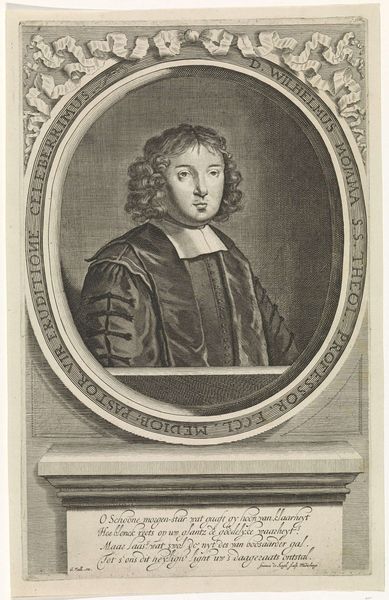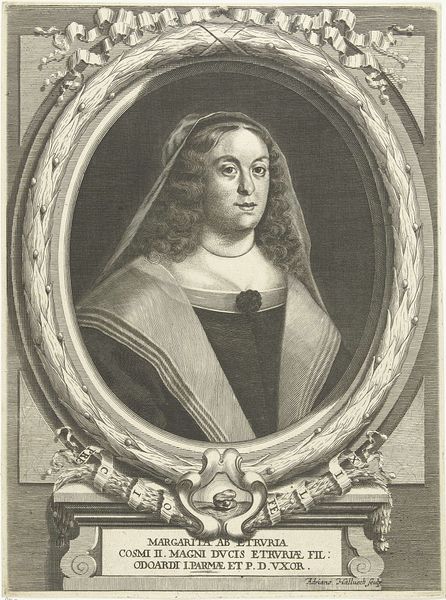
drawing, print, paper, engraving
#
portrait
#
drawing
#
baroque
# print
#
paper
#
france
#
engraving
Dimensions: 340 × 263 mm (image); 343 × 268 mm (plate); 346 × 271 mm (sheet)
Copyright: Public Domain
Editor: Here we have Antoine Masson's "Gaspar Charrier, King's Secretary," a print – likely an engraving – on paper, residing at the Art Institute of Chicago. The detail is remarkable. How do you interpret this work beyond it being simply a portrait? Curator: This engraving offers a lens through which we can examine the performance of power and status in 17th-century France. Consider how the visual language—the ornate frame, the laurel wreath, the gentleman's clothing, and most importantly the heraldry at the base—operates to construct and legitimize Charrier's position. The gaze is averted, but the text framing his face names his status as king's advisor and magistrate. To whom is this print speaking and what hierarchies are being reinforced? Editor: So it's about more than just likeness, it's actively communicating something about social structure. Is there anything particularly French about this approach? Curator: Absolutely. French society at this time was deeply structured around patronage and courtly life. The print then, becomes a tool within that system, circulating ideas about status and authority, solidifying Charrier's image, and performing what it meant to be an important man within the French Royal Court. How do you think representations of power have changed in the centuries since, and what continuities might exist? Editor: That's fascinating, framing it in terms of active construction of power. I'll definitely look at portraits differently from now on! Curator: Indeed! It's crucial to move beyond mere observation and to critically engage with what these images tell us about historical power dynamics. Remember to examine the subject, and also question how the work actively participates in its contemporary social world.
Comments
No comments
Be the first to comment and join the conversation on the ultimate creative platform.


